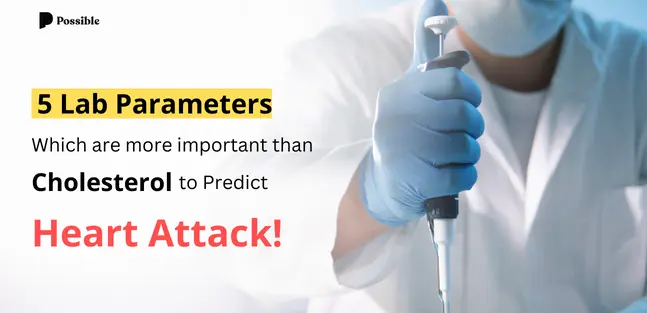HOMA-IR
“Emerging evidence shows that insulin resistance is the most important predictor of cardiovascular disease and type 2 diabetes,” says Robert Lustig, M.D., Endocrinologist and Professor at the University of Southern California.
What is Insulin Resistance?
Insulin resistance is when cells in your body don’t respond well to the hormone insulin and can’t easily take up glucose from your blood. As a result sugar levels rise up in the blood, eventually leading to diabetes.
It is a well-accepted fact that insulin resistance leads to diabetes. But what many people do not know is that insulin resistance leads to multiple diseases including cardiovascular diseases.
Gerald Reaven, a Stanford University medical professor, observed in 1988 that insulin resistance was at the centre of many diseases: high BP, obesity, high triglycerides and many more. His studies show that if a person suffers from insulin resistance, then he or she has a 40X increase in his risk for heart disease. 40X higher. It’s shocking that not many people talk about it.
How Do We Measure Insulin Resistance?
There is a very simple blood test for it: HOMA-IR. HOMA stands for the Homeostatic model of insulin resistance. Just with the help of your fasting blood sugar levels and fasting insulin levels, this parameter is calculated. If your value is between 0.5-1.4, then you are healthy. And if it’s higher than 1.9, then you have insulin resistance. And a value above 2.9 should ring alarm bells and you need to take action immediately.
HS-CRP
You might be aware of inflammation. Inflammation means a cut or a swollen tissue which is painful. It is the body’s response to removing damaged cells or irritants before the healing process can begin.
But do you know there is something called internal inflammation which is invisible?
It is neither painful nor visible, but it’s extremely deadly. It is a fire that is kept hidden by the body‘s immune system as it combats food allergens, toxins, stress and bad food.
Even though this inflammation is harmful, we sadly don’t have any antiseptic that can cure it. Internal inflammation occurs due to refined carbs, sugar, trans fats and many inflammatory Omega-6 fats, artificial sweeteners, gluten, dairy, chronic infection, stress, processed plant oils, hidden food allergies and sensitivities, etc. It can cause diseases ranging from common cold to cardiovascular disease to even cancer!
How Do We Measure Internal Inflammation?
With the help of a very simple parameter called HS-CRP (High sensitivity C-reactive protein). It is produced by the body when blood-vessel walls are inflamed. The higher your levels of hs-CRP, the higher your levels of inflammation tend to be. The standard range for HS-CRP is 0-2.9, but the optimal range is 0-1.7. If you have higher levels of HS-CRP, then you need to make lifestyle modifications to bring it down.
The American Heart Association and U.S. Centres for Disease Control and Prevention define cardiovascular risk groups for HS-CRP levels as follows.
- Low risk: < 1.0 mg/L
- Average risk: 1.0-3.0 mg/L
- High risk: > 3.0 mg/L [1]
People with high hs-CRP have a 1.5 to 4X higher risk of heart attack, than people with low HS-CRP.
Homocysteine
Homocysteine is a type of amino acid, a chemical that your body uses to make proteins. Different labs have different standard ranges; anywhere from 10-15. The optimal range for it is less than 8. If you have high levels of homocysteine, it can block your arteries. The good news is that with the right amount of Vitamin 12, Vitamin 6 and folic acid, you can bring your homocysteine levels to the normal range.
LP(a)
Lipoproteins are particles which carry cholesterol through your bloodstream to your cells. There are 2 main groups: HDL (high-density lipoprotein) or “good” cholesterol and LDL (low-density lipoprotein) or “bad” cholesterol.
Lipoprotein (a) is a type of LDL. They carry cholesterol to the cells in your arteries. If you have high levels of LP(a), you may form blockages called plaques in your artery.
Though all LDL is considered bad, there are many varieties of LDL and not all are equally bad. In fact, some are good. But LP(a) is specifically bad for your heart. Your normal blood report might show a normal level of LDL, but it may not mean much. Because you can have a high level of LP(a) even with a normal LDL range. Though not a very popular marker, it’s a much better indicator of your heart health than LDL.
The standard range for LP (a) is <30 and the optimal range is <24.
Triglyceride/HDL ratio
Amongst all the cholesterol markers, the Triglyceride/HDL ratio is the most important. You should have a high HDL number (minimum 50, ideally 55) and a low triglyceride level (ideally around 100). Hence an optimal number is <2.
In a study published in a journal by American Heart Association, it was observed that a person with a high triglyceride/HDL ratio had 16 times higher risk of heart disease than someone with a low ratio.
I hope you will look at all these parameters to measure and always keep check on your heart health and not just give undue importance to total cholesterol numbers and LDL.
